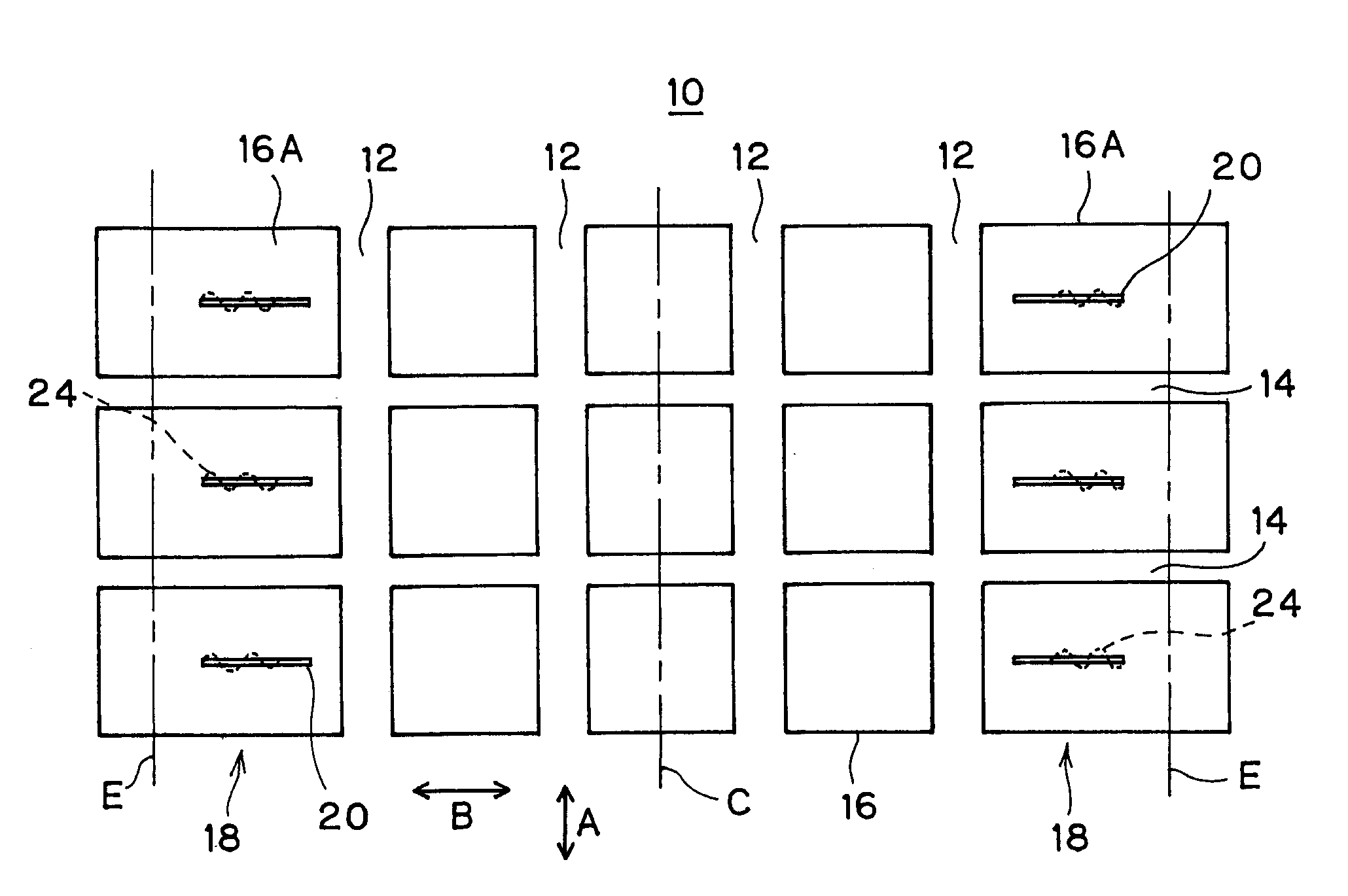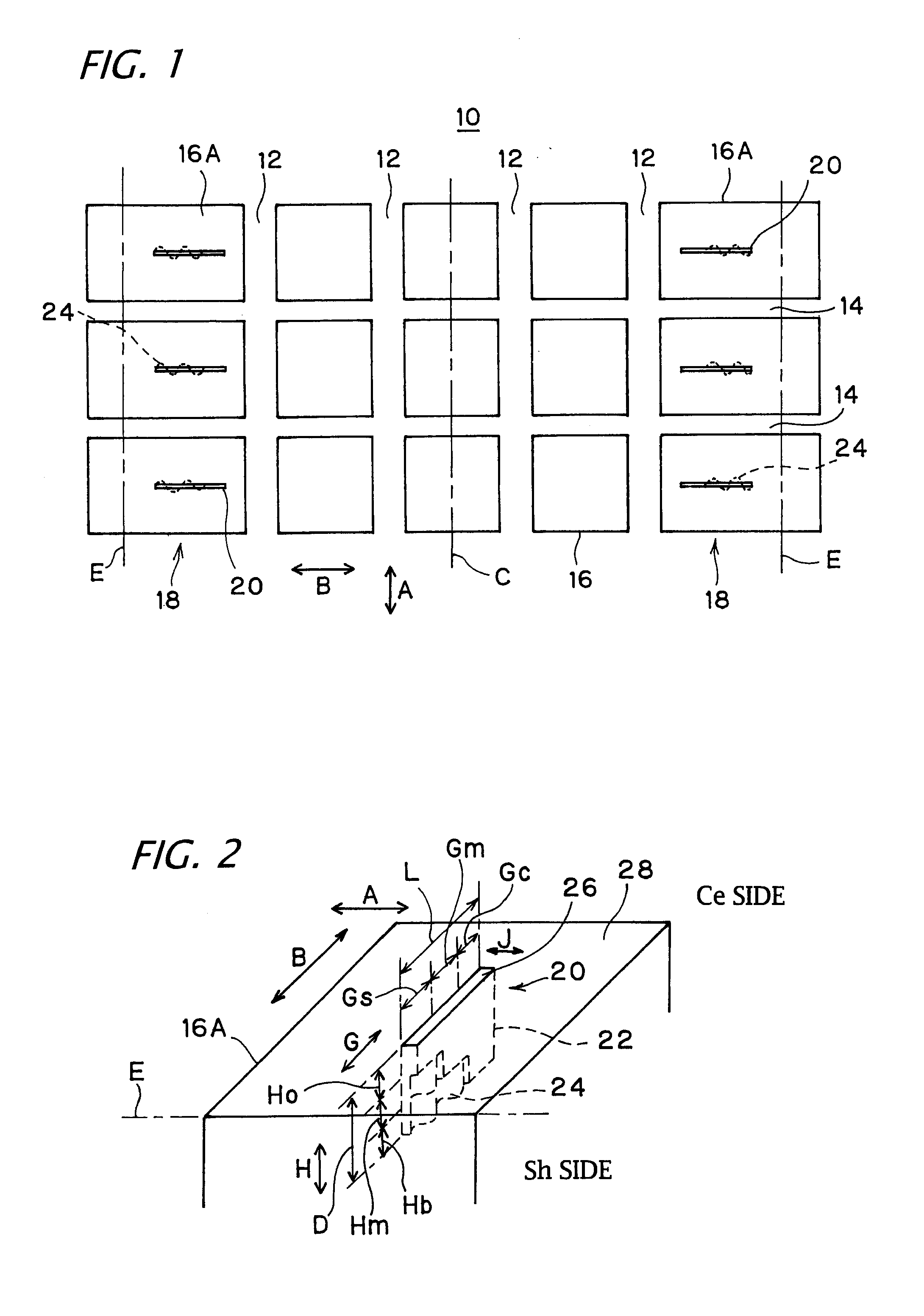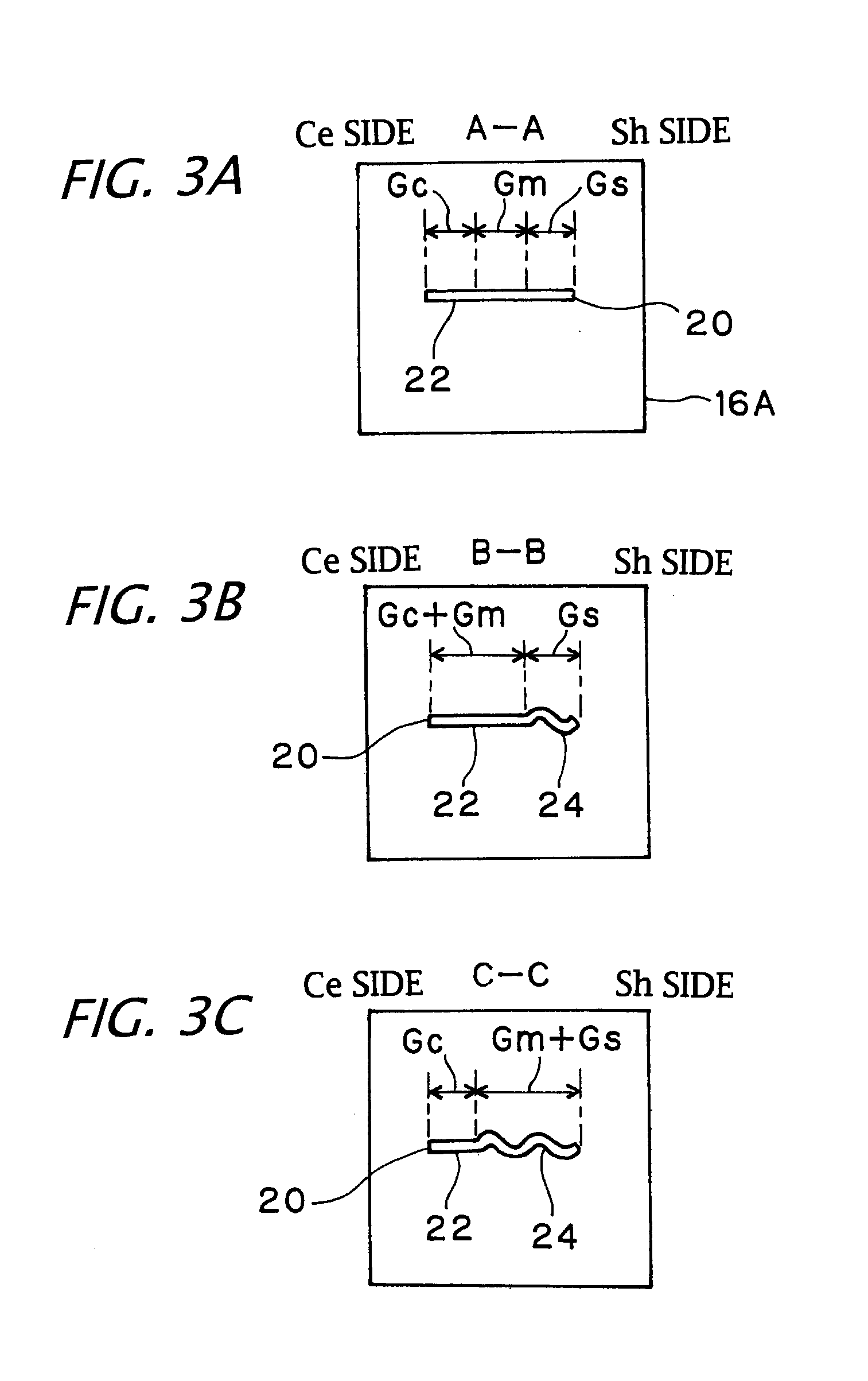Pneumatic tire
a pneumatic tire and rubber technology, applied in the field of pneumatic tires, can solve the problems of poor die releasability, easy rubber chipping, adverse effects on braking performance and wear performance, etc., and achieve the effect of improving the releasability of the sipe molding blad
- Summary
- Abstract
- Description
- Claims
- Application Information
AI Technical Summary
Benefits of technology
Problems solved by technology
Method used
Image
Examples
first embodiment
[0021]Though illustration is omitted, a pneumatic tire according to First Embodiment is configured to include a left-and-right pair of a bead part and a sidewall part and a tread part 10 provided between the both sidewall parts so as to connect radial-direction external end parts of the left-and-right sidewall parts to each other. The tire includes a carcass extending over the pair of bead parts. The carcass is composed of at least one carcass ply which extends from the tread part 10 to the sidewall parts and both end parts of which are engaged with an annular bead core embedded in the bead parts, and reinforces each of the foregoing parts. A belt composed of two or more rubber-coated steel code layers is provided on the peripheral side of the carcass in the tread part 10 and reinforces the tread part 10 in the periphery of the carcass.
[0022]As shown in FIG. 1, the tread part 10 is provided with plural longitudinal grooves (main grooves) 12 extending in a straight line in a tire cir...
second embodiment
[0041]FIGS. 5A to 5C are each a view of showing the sipe 20 according to Second Embodiment in each of wear stages. In this exemplary embodiment, the wave number of the waveform sipe portion 24 is increased twice as compared with the foregoing First Embodiment. In this way, the wave number of the waveform sipe portion 24 is not particularly limited, and various modifications can be made. Also, the amplitude and wavelength of the waveform and the like are not particularly limited, and they can be properly set up. With respect to Second Embodiment, other configurations are the same as those in First Embodiment, and the same functions and effects are brought.
third embodiment
[0042]FIG. 6 is a view showing the sipe 20 according to Third Embodiment and is concerned with a front view showing a sipe wall face and a section in each of wear stages (A-A line section in a first wear stage, B-B line section in a second wear stage, and C-C line section in a third wear stage). In this exemplary embodiment, in an end part on the tread ground contact end side Sh in the sipe length direction G, a region in which the waveform sipe portion 24 is provided over the whole of the sipe depth direction H. On that point, Third Embodiment is different from First Embodiment.
[0043]That is, in this exemplary embodiment, the sipe 20 is divided into four regions in its length direction G, in which a region on the equator side Ce is defined as the inner region Gc, a region adjacent to its ground contact end side Sh is defined as a first central region Gm1, a region adjacent to the ground contact end side Sh of the first central region Gm1 is defined as a second central region Gm2, a...
PUM
 Login to View More
Login to View More Abstract
Description
Claims
Application Information
 Login to View More
Login to View More - R&D
- Intellectual Property
- Life Sciences
- Materials
- Tech Scout
- Unparalleled Data Quality
- Higher Quality Content
- 60% Fewer Hallucinations
Browse by: Latest US Patents, China's latest patents, Technical Efficacy Thesaurus, Application Domain, Technology Topic, Popular Technical Reports.
© 2025 PatSnap. All rights reserved.Legal|Privacy policy|Modern Slavery Act Transparency Statement|Sitemap|About US| Contact US: help@patsnap.com



